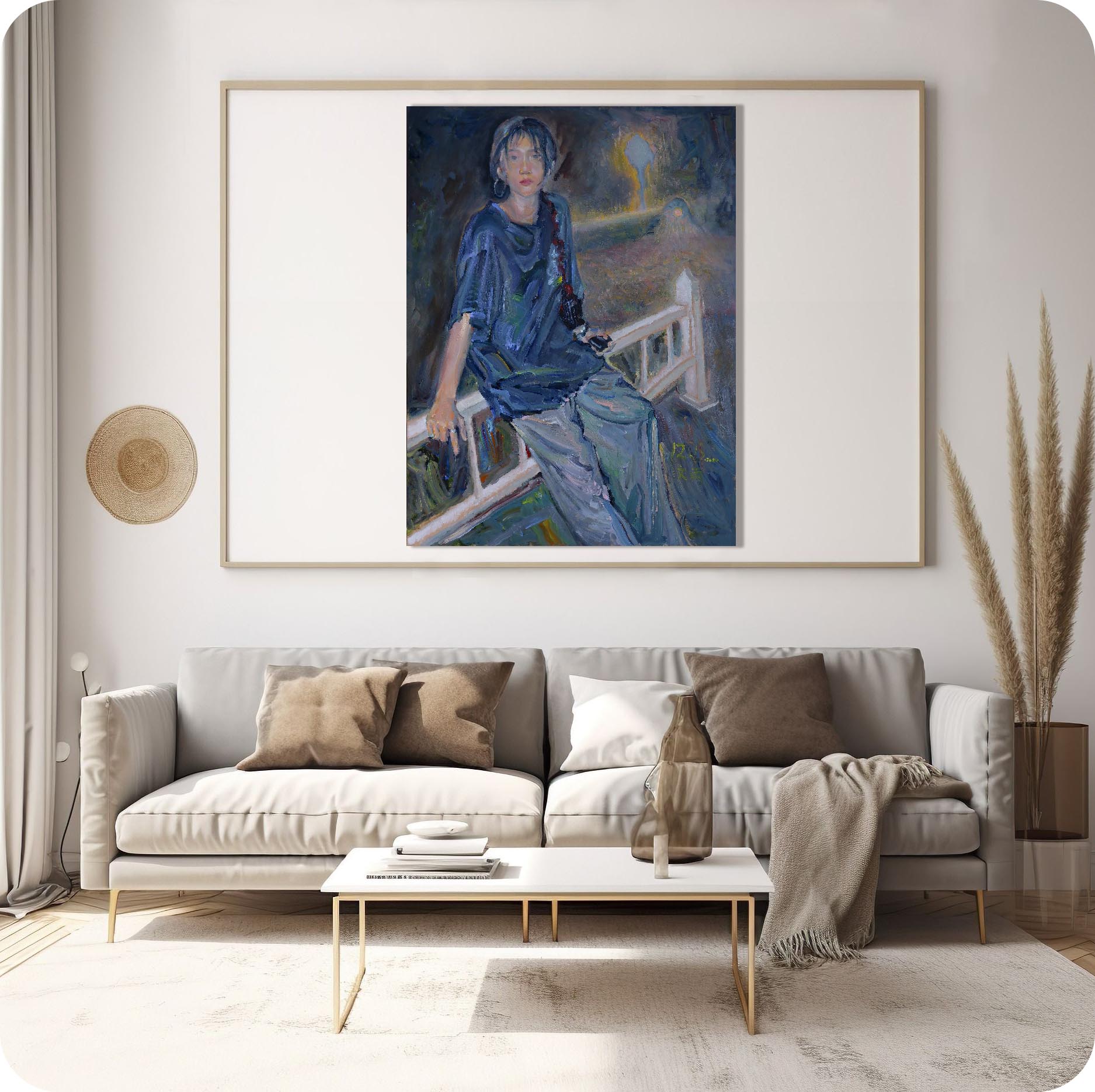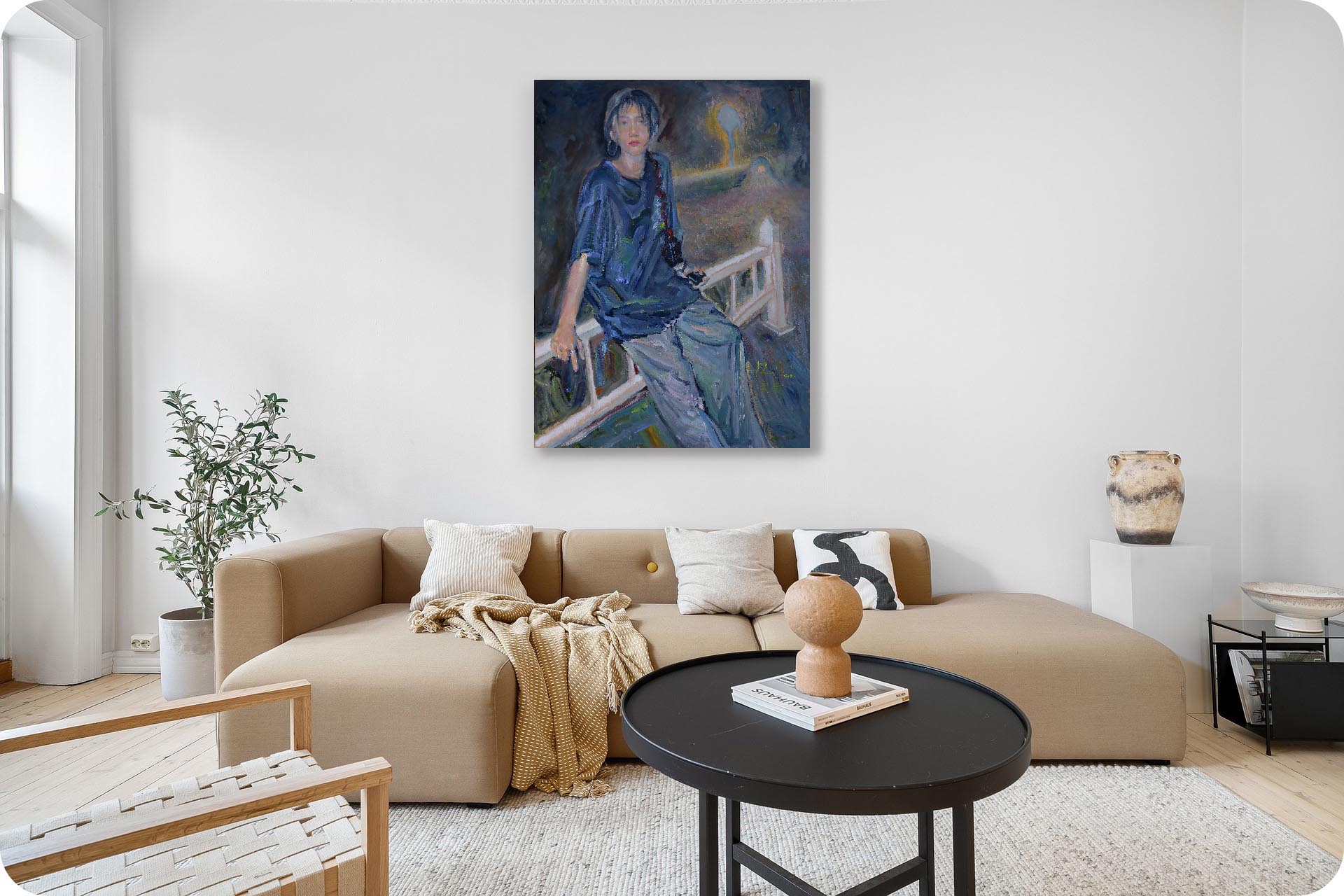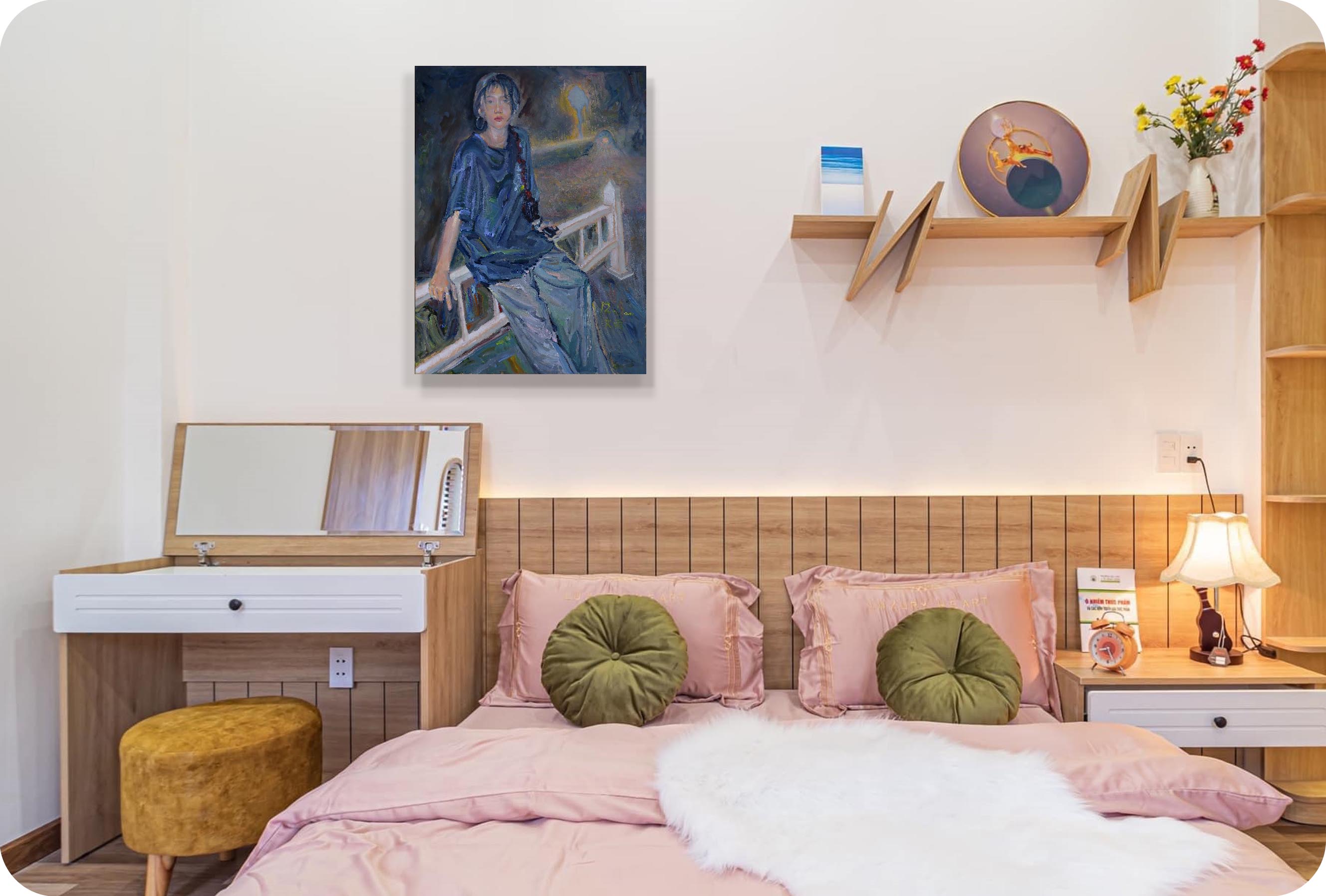This painting was created in 2021. I spent half of this year teaching painting and the rest of the time traveling alone. There are less paintings and more poetry creation. Most of the feelings about the works come from what I saw during my travels.
As I experienced the differences in my friends' lives, I also experienced the love they each built on their city lives.
Inches: 23.6 x 31.5 in
Size without the frame: 60 cm x 80 cm
Country: China
Date: 2021
Materials: Acrylic paint on board
Condition: well preserved
Creative themes and style | My works revolve around the creative concept of "The land of humanity, People on the land". The people in the painting are people in nature, and the lines, shapes, and colors are close to nature. The nature in the painting is nature in the eyes of humans, existing in interaction with humans.I don’t pursue a series of works with a fixed and continuous style. I hope that the style of the pictures will synchronize with the changes in my life and always remain oscillating. The performance of the work must be in sync with the development of one's own life in order to be Sincere and powerful. Ideas are later.
An Interview with Artist Philo by Artphiloso Gallery
If you would like to collect this artwork or know more about the artist, please contact us.
abstract canvas art,modern contemporary art,black canvas painting,frame for canvas painting.



The blue-gray palette resonates with the night-like background, giving the figure a sense of composure and restraint. This treatment not only reinforces the detached atmosphere of urban life, but also highlights the subtle feeling of loneliness in the figure’s gaze.
The railing’s straight lines contrast with the natural curves of the arm, creating a tension between rigidity and softness. This detail enhances the structural depth of the painting, symbolizing both the constraints and support of city life.
The light is not a literal depiction but a fusion of abstracted tree shadows and lamplight. Its blurred, hazy quality contrasts with the figure’s cool-toned presence, expressing the subtle tension between the inner self and the external environment.
It is more than a portrait—it captures the psychological state of youth within the urban context. Collecting such a work allows one to create an atmosphere of depth in a private space while also providing a compelling case study for academic exhibitions focused on the contemporary urban experience.
With its restrained tones and understated atmosphere, the piece is especially suited for a contemporary art gallery, private study, or avant-garde art space. Placed in such settings, it conveys the aesthetic of urban solitude and invites viewers into a contemplative experience.
A: Click here to view ARTPHILOSO's Guide for Collectors.
More paintings from this series:
Careful Architecture of City Love 1
